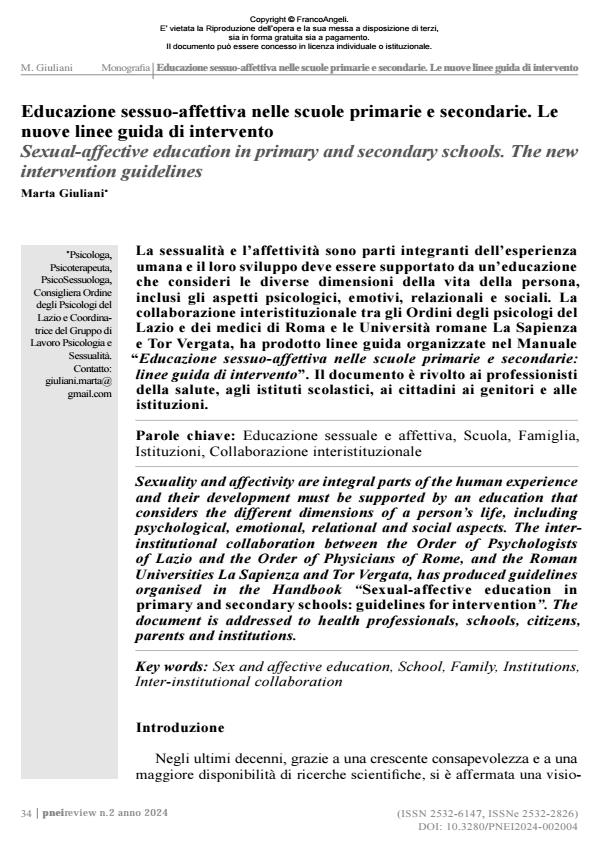Sexual-affective education in primary and secondary schools. The new intervention guidelines
Journal title PNEI REVIEW
Author/s Marta Giuliani
Publishing Year 2024 Issue 2024/2
Language Italian Pages 14 P. 34-47 File size 150 KB
DOI 10.3280/PNEI2024-002004
DOI is like a bar code for intellectual property: to have more infomation
click here
Below, you can see the article first page
If you want to buy this article in PDF format, you can do it, following the instructions to buy download credits

FrancoAngeli is member of Publishers International Linking Association, Inc (PILA), a not-for-profit association which run the CrossRef service enabling links to and from online scholarly content.
Sexuality and affectivity are integral parts of the human experience and their development must be supported by an education that considers the different dimensions of a person’s life, including psychological, emotional, relational and social aspects. The interinstitutional collaboration between the Order of Psychologists of Lazio and the Order of Physicians of Rome, and the Roman Universities La Sapienza and Tor Vergata, has produced guidelines organised in the Handbook “Sexual-affective education in primary and secondary schools: guidelines for intervention”. The document is addressed to health professionals, schools, citizens, parents and institutions.
Keywords: Sex and affective education, School, Family, Institutions, Inter-institutional collaboration
Marta Giuliani, Educazione sessuo-affettiva nelle scuole primarie e secondarie. Le nuove linee guida di intervento in "PNEI REVIEW" 2/2024, pp 34-47, DOI: 10.3280/PNEI2024-002004